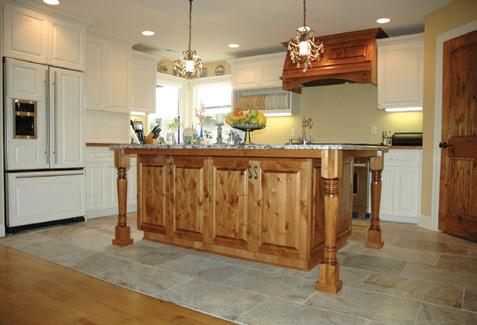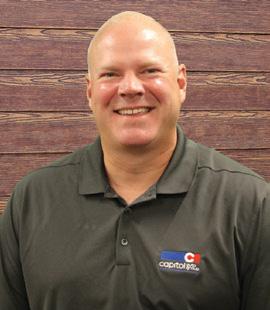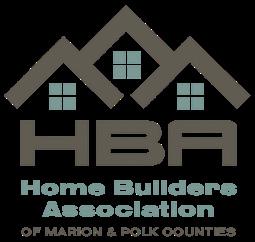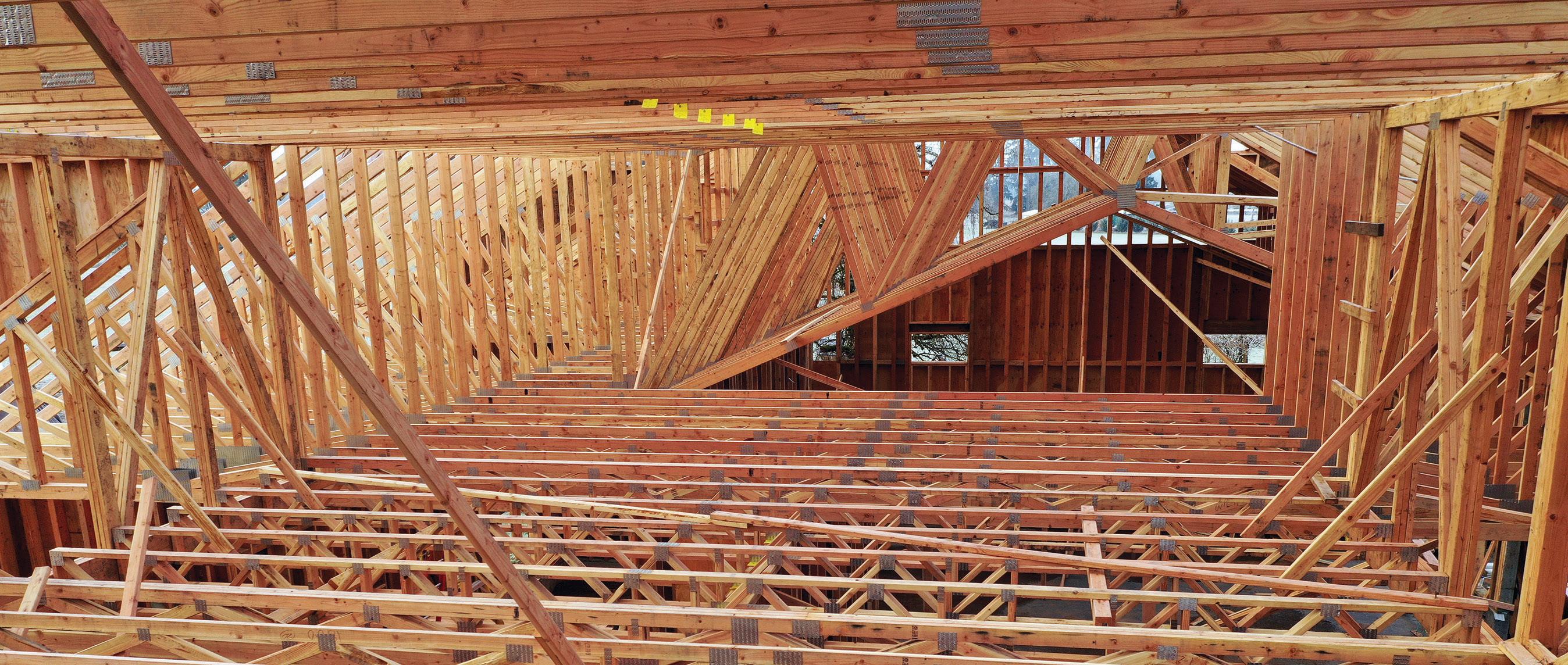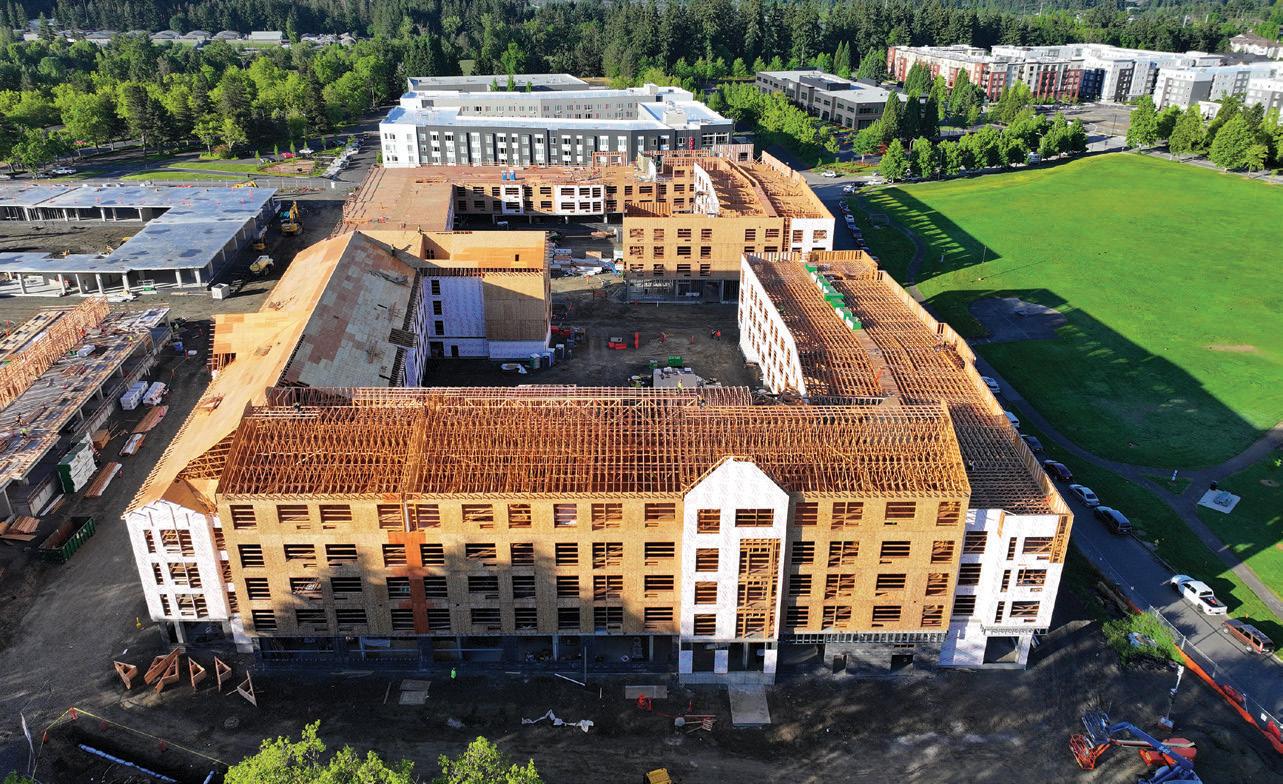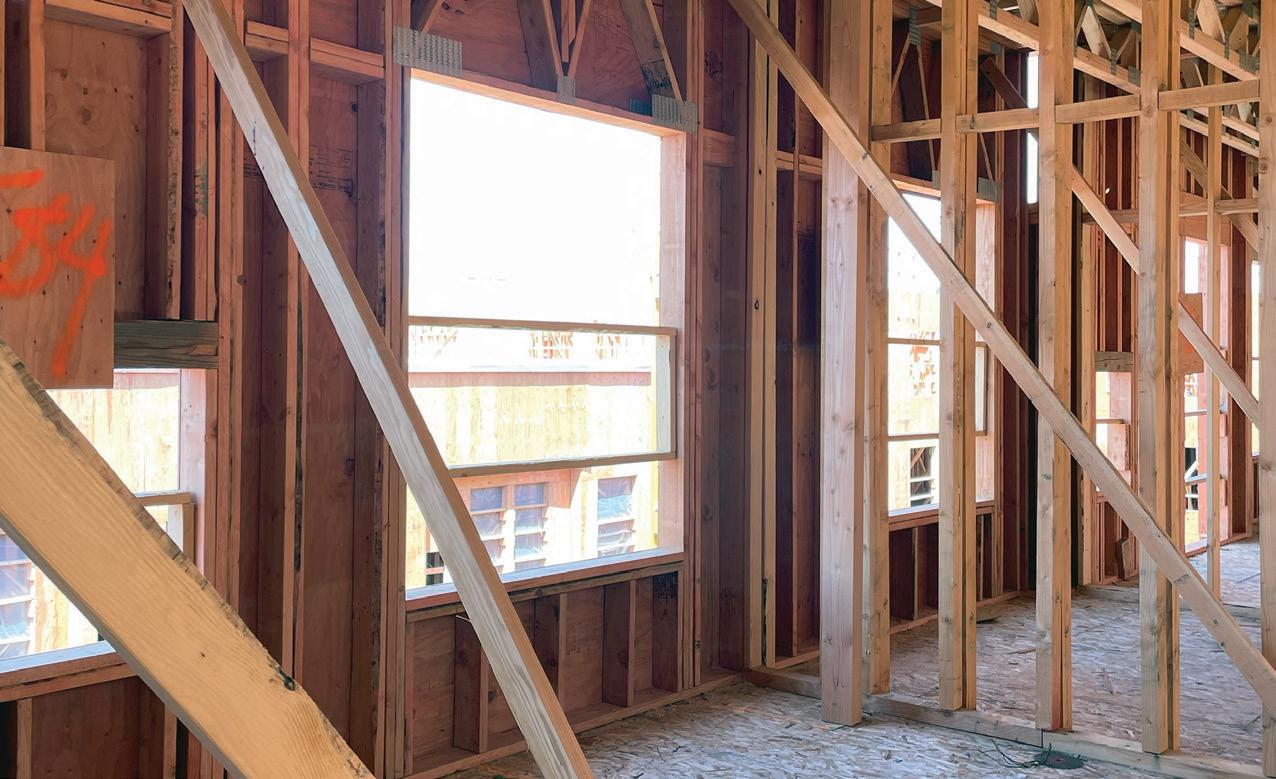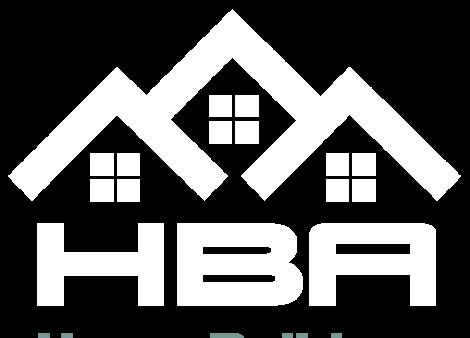
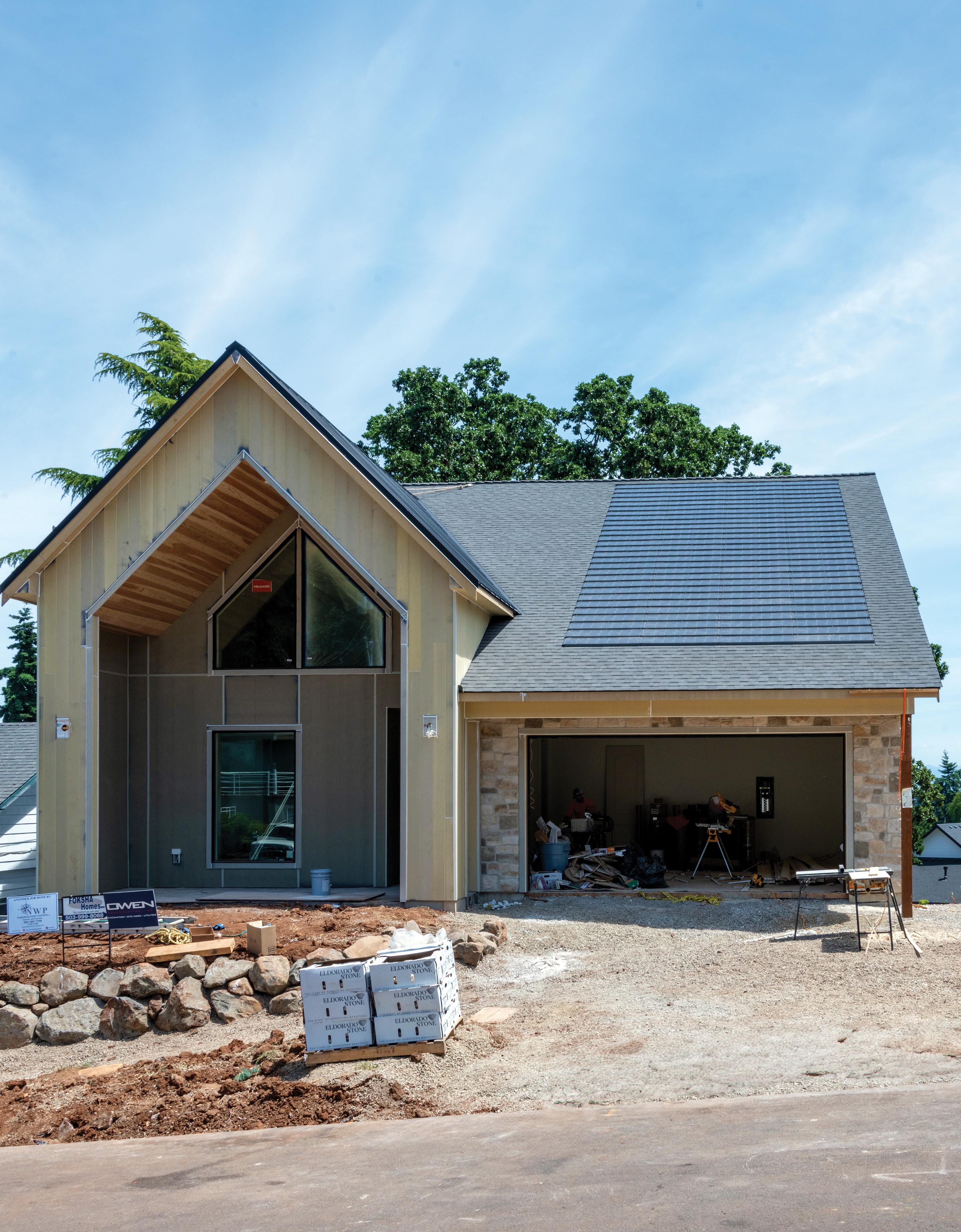






2025 Board of Directors
PRESIDENT
Andrew Wheeler, T. Wheeler Homes
VICE PRESIDENT
Beth Rhoades, C & R Remodeling
SECRETARY/TREASURER
Justen Maron, Olsen Communities
ASSOCIATE VICE-PRESIDENT
Samantha Crabb, Cherry City Interiors
IMMEDIATE PAST PRESIDENT
Oleg Foksha, Foksha Homes
FORMER PAST PRESIDENT
John Hammer, John Hammer Construction
Ryan Brock, Withers Lumber
Dale Kaufman, Kaufman Homes
Dan Reynolds, Saalfeld Griggs PC
Gavin Radigan, Radigan Remodeling
Jed Bennett, Steve Bennett Construction
Scott Kelly, Kelly’s Home Center
Misti Miller, Radigan Remodeling
Yuriy Murashko, Mountain Coast Electric
Leonid Snegirev, LNC Homes
Tony Todd, Cascade Door
Kayla Van Lydegraf, The Fixture Gallery
Kelly Webb, AK Webb Remodeling
Duane West, 3Rs Construction
Mike Riddle, Mike Riddle Construction
Mike Erdmann, Chief Executive Officer mike@HomeBuildersAssociation.org
Haley Hamilton, Director of Shows & Events haley@HomeBuildersAssociation.org
Matt O’Reilly, Director of Member Services matt@HomeBuildersAssociation.org
Roy Shawgo, Director of Safety & Loss Control roy@HomeBuildersAssociation.org
Tracy Mitchell, Contract Accountant accounting@HomeBuildersAssociation.org
Home Builders Association of Marion & Polk Counties
2075 Madrona Ave SE Suite 100, Salem, OR 97302
tel 503-399-1500 | fax 503-399-0651 www.HomeBuildersAssociation.org
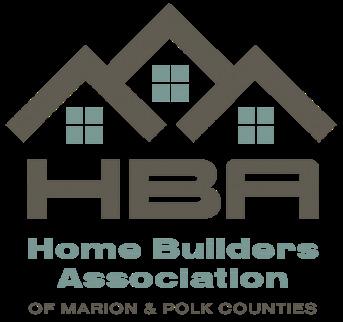

Legislative Win That Puts Cities on the Clock and Housing on the Map
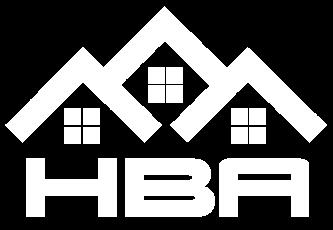
One of the best things about being part of the Home Builders Association is the opportunity it gives us to connect—not just with other professionals, but with a broader mission to support and strengthen the building industry in our region. Over the years, I’ve seen firsthand that the members who get the most out of their HBA membership are the ones who get involved. They’re the ones who show up, lend their voice, and take part in the work that keeps our industry moving forward.
If you haven’t yet taken that step, I want to encourage you to consider getting more engaged this year. A great way to start is by joining one of our committees. Whether you care about the rules and regulations that affect how we build, want to help recruit and retain members, are passionate about professional education, or enjoy putting on events that bring people together, there’s a committee that fits your interests. Our Government Affairs Committee plays a key role in shaping local policies that impact housing affordability and land use. The Membership Committee helps us grow and keep our community strong. The Education Committee plans courses and learning opportunities that keep our members sharp and up to date. Our Consumer Shows Committee organizes events like the Home Show that showcase our industry to the public, while the Networking & Events Committee plans the networking events and social gatherings that bring members together throughout the year.

These committees are where the real work of the association happens, but they’re also where relationships are built. You don’t have to be a policy expert or an event planner to join—just bring your perspective and a willingness to contribute. Most committees meet once a month at most, and it’s a manageable commitment with a big return.
Even if you’re not ready to serve on a committee, I’d encourage you to attend more HBA activities. Our networking nights, educational seminars, golf tournaments, and other gatherings are designed to help you connect with others in the industry. The relationships you build at these events can lead to new business opportunities, trusted partnerships, and even long-term friendships. In our line of work, who you know matters—and there’s no better place to build your network than here at the HBA.
I’m proud to serve as your HBA President this year, and I hope you’ll take full advantage of everything this association has to offer. Whether it’s by joining a committee, attending an event, or simply reaching out to another member you haven’t met yet, I encourage you to take that next step.
Together, we’re building something bigger than any one company—and I look forward to seeing what we can accomplish when more of us get involved.
2025 HBA President
T. Wheeler Homes, LLC
The Home Builders Association’s 2025 Tour of Homes opens Saturday, July 12 and runs through Sunday, July 20, and it remains one of the most visible ways we put the work of our industry on display for the public.
More than just an open house circuit, the Tour is a full-scale showcase of the craftsmanship, innovation, and professionalism that define our members. It’s a chance for the public to see the value of new construction up close—and for those of us in the industry, it’s an opportunity to see what our peers are building, gather ideas, and support the collective effort to promote housing in our region.
This year’s Tour features homes throughout the region, with a wide mix of price points, styles, and layouts. The lineup includes everything from custom builds to spec homes, each one highlighting the work of our local builders, subcontractors, suppliers, and designers.
For participating builders, the Tour remains one of the most effective marketing tools we offer. There’s nothing quite like being able to walk a potential buyer—or a potential future client—through a finished product and let the quality speak for itself. For subcontractors and vendors, it’s a great way to see your work in context, whether it’s trim detail, lighting, tile, cabinetry, or the finishing touches that pull a home together.
The Tour also includes the New Product House, a collaborative HBA project built with donated and discounted labor and materials from members. This home plays a key role in funding the HBA’s advocacy work, supporting efforts to elect

pro-housing candidates and fight for policies that keep housing attainable and our industry viable.
Even if you’re not directly involved in the Tour this year, you’re encouraged to get out and see the homes. It’s a great way to support fellow members, stay up to date on design and construction trends, and connect with others in the field. Every year, builders tell us they pick up ideas or inspiration from something they saw on the Tour, and the connections made during Tour week often lead to future business.
Tour guides and maps will be available in print at all Tour homes, and online at TourofHomes.net. Homes are open noon – 6pm on weekends and 6pm – 9pm during the week, and as always, admission is free.
Make time to stop by a few homes this July—not just to see what’s new, but to celebrate the high standards and community spirit that define our local building industry
For builders managing tight schedules and even tighter budgets, printing construction plans can be an overlooked but ongoing expense. At the Home Builders Association, a growing number of members are turning to a resource that delivers both speed and value: in-house blueprint printing.
The HBA has long offered large-format printing for its members, with a straightforward price—$1.65 per page for standard 24-by-36 sheets—that comes in well below the rates charged by most commercial reprographics shops. Plans can also be printed in other sizes, ranging from 12 x 18 up to 36 x 48, depending on project needs.
With most jobs completed within an hour or two, the quick turnaround, combined with the cost savings, has made it a go-to option for many members who need quick, reliable prints without a trip across town or a markup for same-day service. Contractors can email files directly to plans@homebuildersassociation.org, or use homebuildersassociation.wetransfer.com to
upload larger plan sets. Printed plans are available for pickup at the HBA office, and members can specify page sizes, number of sets, and whether they want standard bond or water-resistant paper.
The water-resistant option, in particular, has gained traction with builders working through Oregon’s wet seasons. The synthetic material holds up better in the field, where traditional paper often tears, smudges, or disintegrates when exposed to moisture.
While the printing service isn’t a new offering, it’s become a routine part of how many HBA members handle their project logistics. As with many HBA services, the blueprint printing option is aimed at making the day-to-day work of members more efficient—and in this case, less expensive. Whether for permitting, field reference, or client meetings, paper plans remain a staple of the construction process. And with this resource, members have a fast and affordable way to keep them in hand.
HBA members with a workers’ compensation policy through SAIF Corporation could be in line for even more savings. Starting with policy renewals on or after July 1, 2025, the group discount available through the HBA’s partnership with SAIF will increase to 12%.
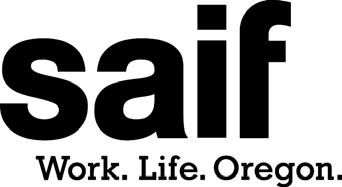
This isn’t a new program—it’s a long-running benefit offered to HBA members who meet the criteria for inclusion in the SAIF Group Program. For businesses that qualify, this discount can lead to significant annual savings, especially for companies with large payrolls.
But the value of the program goes beyond just premium savings. Members in the group also receive specialized safety and loss control support from Roy Shawgo, the HBA’s Director of Safety & Loss Control. Roy provides jobsite-specific guidance, customized training resources, and help navigating compliance and claim prevention—services that are included at no extra cost.
Not every company with a SAIF policy is eligible to join the HBA Group. One of the reasons SAIF is able to offer a discount to our association is because participating companies tend to have strong safety records and solid management practices.
You’re not simply added to the group—you need to be evaluated for eligibility. If you work with an agent, they can reach out to SAIF to help determine if your company qualifies. If you’re a direct-write SAIF customer (meaning you don’t work through an agent), you can contact SAIF directly to inquire about group eligibility.
• If you work with an agent, ask them to contact SAIF and request a review of your eligibility for the Home Builders Association group program.
• If you’re a direct SAIF customer, reach out to SAIF and ask to be evaluated for the Home Builders Association group program.
• Need guidance? Contact the HBA—we’re happy to help walk you through the process.
For companies that qualify, this is one of the most cost-effective and high-impact benefits of membership. The combination of premium savings and hands-on safety support can make a noticeable difference in your bottom line.
To learn more or get help getting started, contact the HBA at 503-399-1500.

The Spike Club is an exclusive group of members who contribute to the growth of the association by recruiting and retaining members. Spikes maintain a special status, have the respect of their peers as valued members of the HBA and are recognized for their efforts locally and nationally. To become a Spike, bring in six members to the HBA. Applications for prospective members may be obtained from the HBA office, or call to have one sent to the prospective member.
ALL TIME BIG SPIKE 1500+
John Gooley 2784
STATESMAN SPIKE 500+
Ric McNall 812
SUPER SPIKE 250–499
John Mills 453
Rick Massey 442
Dan Dorn 376
Jeffrey Green 380
Chuck Foster 295
Jubal Frost 286
Mike Riddle 284
Jordan Schweiger 284
Greg Conser 254
Steve Johnson 254
ROYAL SPIKE 150–249
Tom Wheeler 220
Don Druliner 204
Rick Ziebell 175
RED SPIKE 100–149
Kelvin Dettwyler 147
Rob Rardin 129
John Hammer 106
Matt Holstege 101
Brad Moore 104
Gordon Root 112
Jodi Bailey 115
GREEN SPIKE 50–99
Kent Kaufman 95
Dan Fitzgerald 92
Rich Kansky 85
Eric Olsen 79
Bob Cavell 76
Larry Bilyeu 75
Don Sturgeon 73
Kathy Temple 65
Eric Jensen 50
Jim Hobbs 48
Ryan Bloedel 48
Kerry Kuenzi 66
Eric Templeton 63
Oleg Foksha 64
Serge Serdsev 60
Mike Smith 56
Patrick Jackson 58
Randy Melton 51
Rich Tovar 51
LIFE SPIKE 25–49
Mark Shipman 32
Hunter Emerick 30
Chad Robb 31
Kimberly Woodward 46
Jason Sawyers 43
David Hafner 40
Nolan Fridley 40
Andrew Wheeler 38
Laura Dorn 31
Peter Strauhal 23
Kevin Stone 28
Randy Reeves 28
Rich Fry 26
Steve Hurley 26
Kraig Kelly 25
BLUE SPIKE 6–24
Jason Robertson 23
Brett Tallan 14
Don Lulay 12
Gary Epping 12
Santiago Sarmiento 13
Chad Montgomery 11
Ricky Fast 10
Chris Rasmussen 10
Jim Sparkman 9
Samantha Crabb 10
Eric Olson 8
Kelli Terjeson 8
Dale Van Lydegraf 7
Caleb Remington 7
David Qualls 8
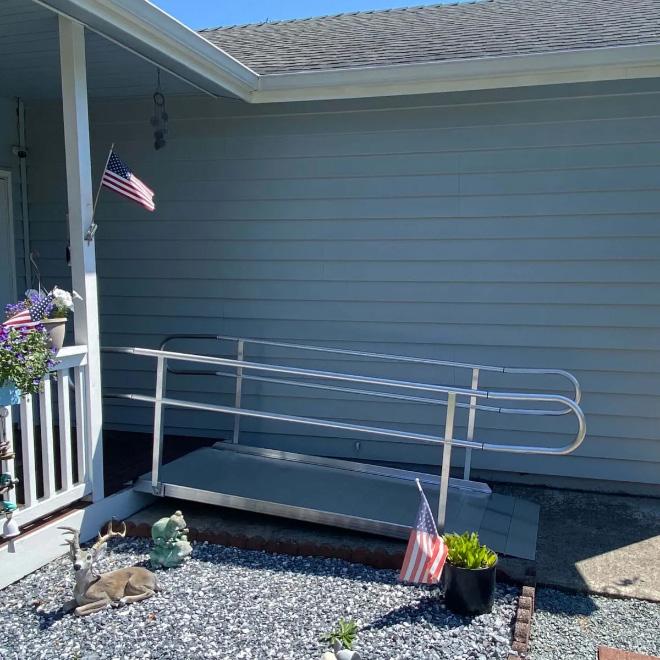
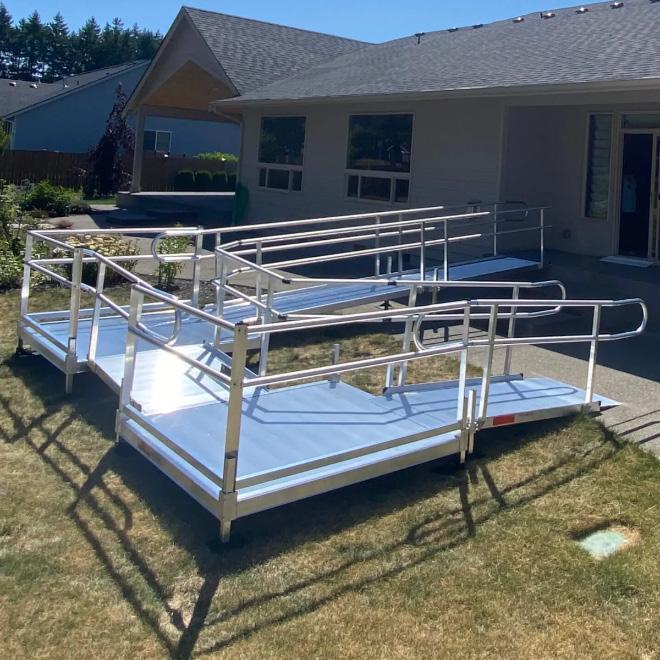
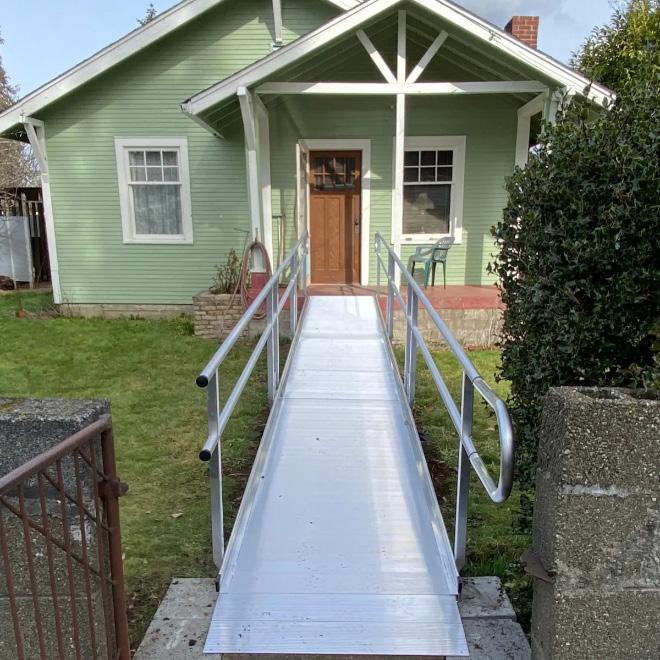




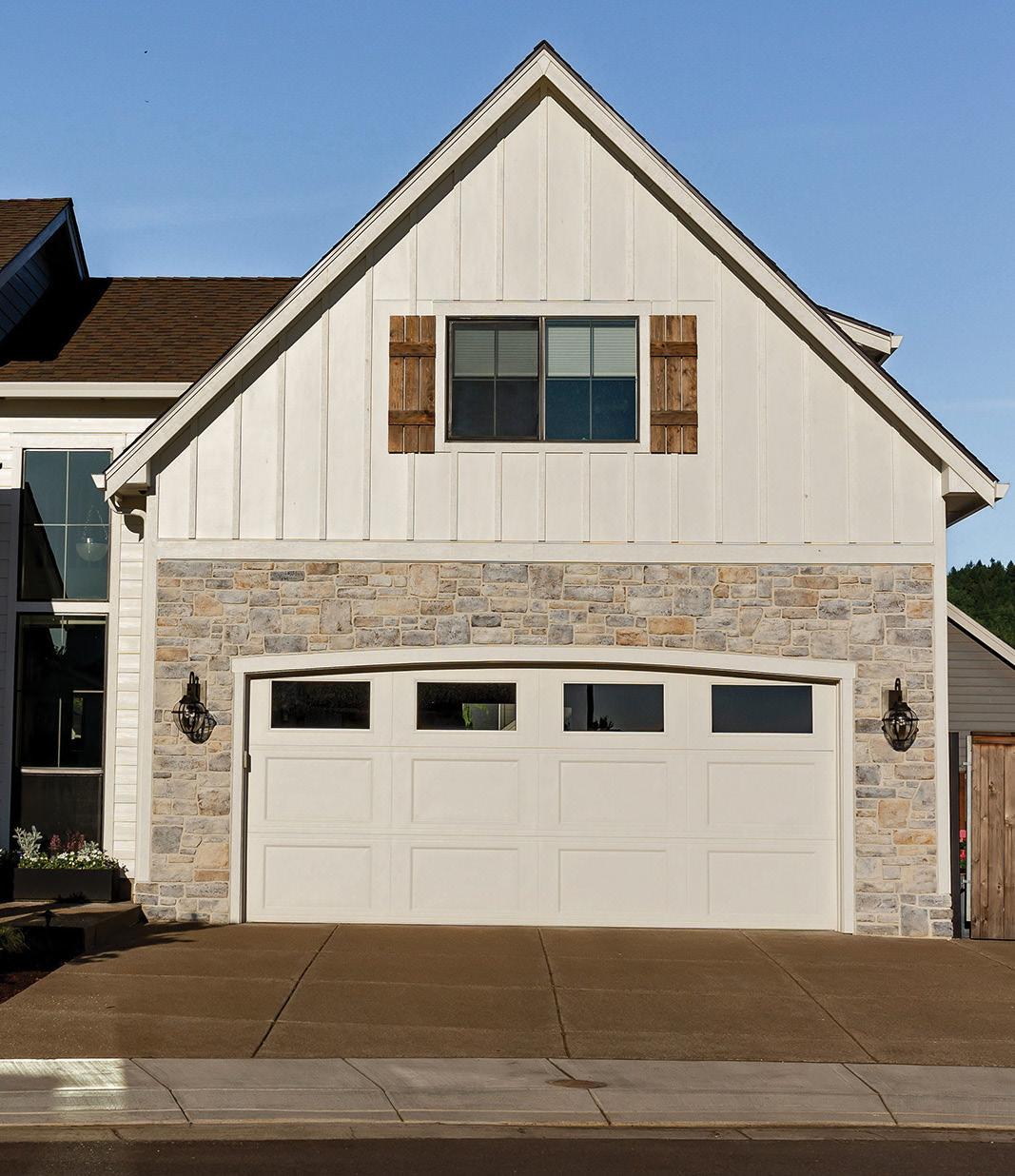
Take advantage of these exclusive member discounts. Contact the HBA for information on how to enroll.

Substantial member discounts on health insurance with Regence BlueCross BlueShield of Oregon through the HBA’s Building Industry Insurance Trust.
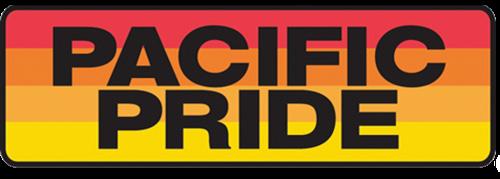
Last year, members saw average savings of 42 cents per gallon on unleaded gas and 57 cents per gallon on diesel in the HBA’s fuel discount program with Ed Staub Petroleum.
AKS Engineering & Forestry, LLC
Mark AuClair (503) 400-6028
Archer Construction
Chris Hayden (971) 209-5380
D. Carmona Construction LLC
David Carmona (503) 917-1516
Go Mini’’s Moving and Portable Storage
Jonathan Penney (503) 523-0822
HomeSmart Realty Group
Marta Guajardo (971) 600-4893
Lifetime Windows & Doors
Sean Culley (971) 443-4085
Lowes
Fernando Negrete (503) 444-1877
Oregon Superior Siding
Alexander Kuznetsov (503) 869-9294
Pato’s Construction LLC
Cinthia Nunez (503) 868-1689
Perch Homes
Kimberly Foulger (503) 269-9661
Members in the HBA’s group workers compensation program with SAIF Corporation gets exclusive member discounts and customized safety and loss control consultation.
Procision Ramps LLC
Berney Zepeda (503) 779-5090
Saalfeld Griggs PC
Bryce Arbour (503) 399-1070
Saalfeld Griggs PC
Emily Rich (503) 399-1070
Taran Construction LLC
Yurii Taran (503) 999-6866

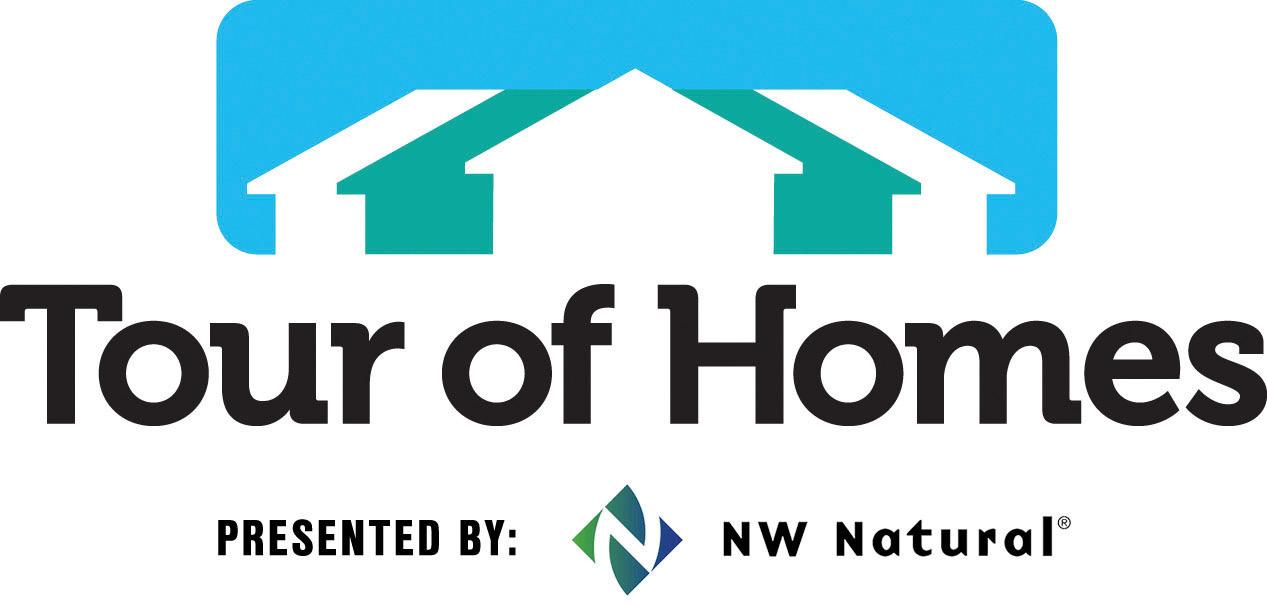
July
July 28th Golf Tournament
Creekside Golf Club
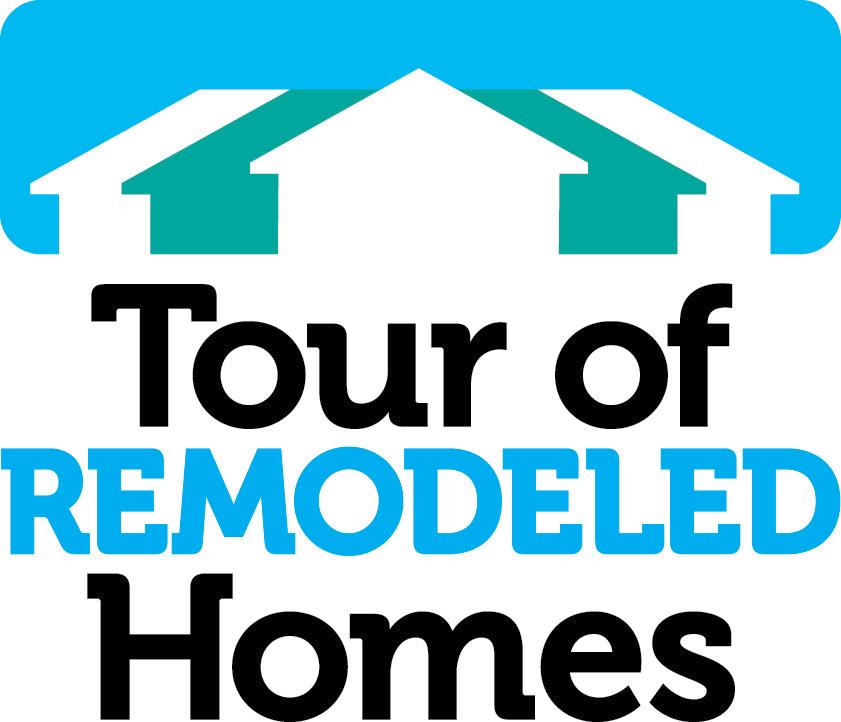
September
September 29th
Trade Show Night
Salem Convention Center
July
July 12th - 20th Tour of Homes

September
September 27th Tour of Remodeled Homes
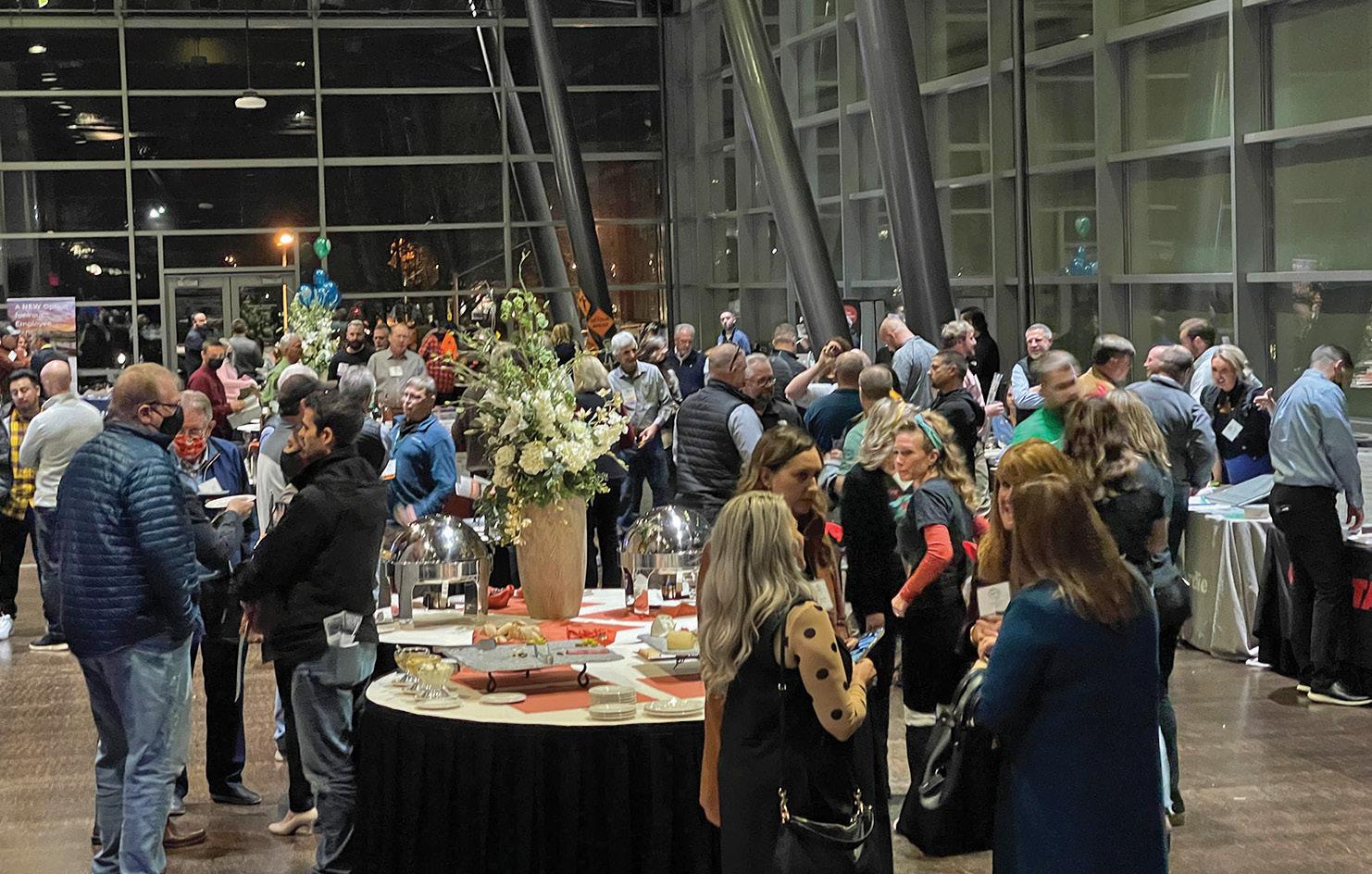
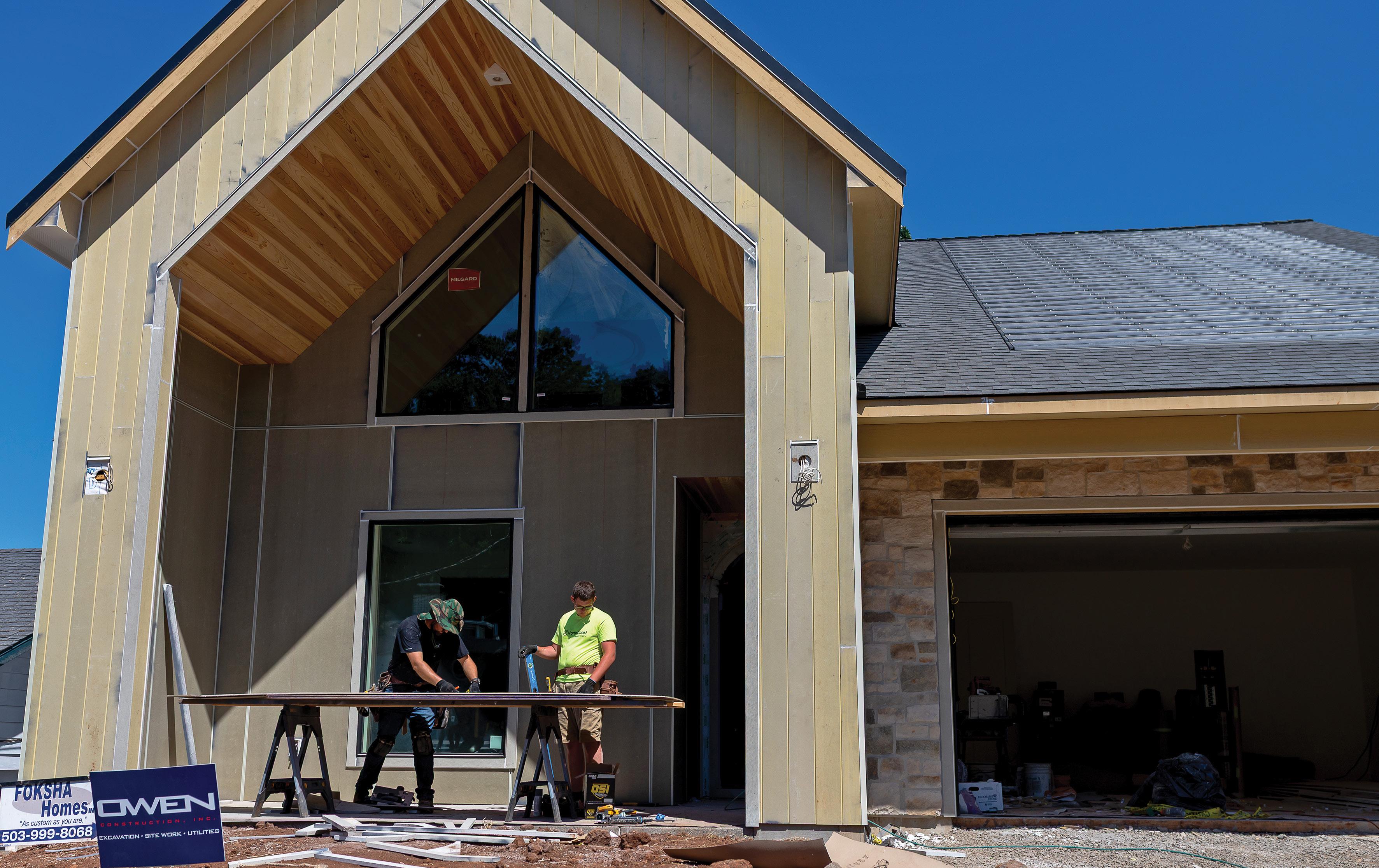
Earlier this spring, the Oregon Legislature passed Senate Bill 426, a sweeping change to wage liability in the construction industry that has set off alarm bells across the state’s building community. The new law holds “direct contractors” financially liable for unpaid wages and fringe benefits owed by their subcontractors — and even subcontractors of subcontractors — to non-unionized workers. The Oregon Home Builders Association strongly opposed the bill, warning that it places unfair and unmanageable risk on contractors who have no way of knowing whether downstream laborers have been paid.
As this article goes to print, SB 426 has passed both the Oregon House (May 30) and Senate (June 2) and is awaiting
Governor Tina Kotek’s signature. The HBA is actively urging a veto, but the bill appears likely to become law.
At its core, SB 426 creates joint and several liability between the “direct contractor” and the owner of a project for unpaid wages and fringe benefits — even if the contractor paid their subcontractors in full. That means if a subcontractor fails to pay their workers, the contractor that hired them can be sued for those wages, penalties, and attorney fees — even if they had no knowledge of the violation.
What’s important to understand is that the definition of “direct contractor” in the bill goes far beyond what most in the industry would think of as a general contractor. Any company that enters
into a construction contract with a property owner — whether they’re managing a full build or just handling a piece of it — can be considered a direct contractor under this law. That includes trade partners such as flooring companies or cabinet shops that subcontract out installation labor.
On a spec home or a development project, where the builder

it apply to properties consisting of five or fewer residential or commercial units on a single tract. Under Oregon law (ORS 215.010), a “tract” means one or more contiguous lots or parcels under the same ownership.
That definition has important implications. While small custom homebuilders and remodelers working on scattered lots or single-family homes likely will fall outside the bill’s reach, the same may not be true for:
• Projects where a builder is building six or more homes on contiguous lots they own;
• A builder constructing a fourplex on one lot and a duplex on the adjacent lot under the same ownership;
• Work on multifamily apartment buildings;
• Middle housing and townhome projects of six or more units; and
• Many commercial construction projects with multiple tenant spaces.
In other words, the bill may not impact every project, but for those building at scale, SB 426 introduces significant new risk.
The Oregon Home Builders Association fought this bill bitterly. We’ve been successful in holding off similar proposals in past legislative sessions, but the political makeup of the 2025 Legislature is different. With new leadership and a stronger presence from lawmakers aligned with organized labor, the Legislature was much more receptive to union-backed wage enforcement proposals. Unfortunately, that shift made it much more difficult to stop SB 426 once it started moving.
also owns the property, a trade contractor that contracts directly with the builder becomes the direct contractor, because the builder is considered the owner. So in that scenario, a flooring company may unknowingly carry full legal liability for unpaid wages — not just for their own employees, but also for subcontracted labor several tiers down.
This expansive definition opens the door for small businesses and specialty contractors — not just large general contractors — to become legally exposed in ways they haven’t been before.
There are two key exemptions in the bill that limit its scope — but the language matters. SB 426 does not apply to work on a property used as the owner’s principal residence, nor does
The problem with this bill isn’t the goal — ensuring workers get paid is something everyone in the industry supports. The problem is the method. SB 426 makes responsible contractors liable for the actions of subcontractors they don’t control. A general contractor may do everything right — hire licensed subcontractors, pay them promptly, follow all applicable laws — and still face lawsuits if a subcontractor fails to pay its crew.
This bill effectively shifts wage enforcement from government regulators to private businesses, turning builders into compliance officers for every tier below them. That burden is especially difficult for small and mid-sized builders who don’t have legal departments or payroll auditing tools — but it affects all of us.
In addition to liability, the bill introduces new recordkeeping requirements for subcontractors.
Upon request from the general contractor, a subcontractor must provide: Continued next page

• Certified payroll reports showing payments to unrepresented workers;
• A list of workers and whether they’re classified as employees or independent contractors;
• Subcontractor contact info and contract duration;
• A list of any subs they’ve hired below them; and
• Disclosure of any prior wage law violations or proceedings.
If a subcontractor doesn’t comply, the direct contractor can withhold payment — but still remains liable for any unpaid wages. The bill also creates a presumption that any worker on a job is an employee, unless proven otherwise under Oregon’s strict independent contractor law (ORS 670.600). Contractors can’t rely on waivers, indemnity clauses, or misclassification to shield themselves.
SB 426 will change how many contractors do business. It may push builders to tighten subcontractor screening, require more paperwork up front, or avoid working with newer or less-established subs altogether. These steps may reduce exposure — but they won’t eliminate it.
Builders developing multiple homes on adjacent lots or working in higher-density zones will need to assess whether their project falls within the scope of the law. Legal and insurance guidance is strongly recommended. It’s also likely that insurance carriers and surety providers will revisit policies to account for this expanded risk.
And as costs rise, those increases may ultimately be passed on to homebuyers — adding yet another layer of pressure to Oregon’s housing affordability crisis.
While SB 426 is framed as a worker protection bill, it sets a precedent that shifts liability from bad actors to good-faith businesses. The bill doesn’t go after contractors who break the law — it goes after the ones who were simply higher up the contracting food chain.
It’s a concerning signal that, in today’s environment, the Legislature is willing to assign risk based not on responsibility, but on proximity to the money. That should worry anyone who builds, hires, or coordinates subcontracted labor.
• Review your subcontractor agreements to ensure they include wage compliance clauses and cooperation requirements.
• Talk to your legal and insurance advisers about exposure under the bill.
• Educate your project managers and staff about the new law’s scope and requirements.
• Track and document all subcontractor communications, especially around payroll and record requests.
The Home Builders Association will continue working to advocate for policies that protect workers without unfairly punishing the businesses that build Oregon. In the coming months, we will host educational sessions to help members understand SB 426, determine how it applies to their work, and adopt practices to reduce risk and stay compliant.
We’ll be with you every step of the way — fighting bad policy when we can, and helping you navigate it when we must.

For years, the home building industry in Oregon has called on lawmakers to do more than talk about the housing crisis—and to instead remove the barriers that keep needed homes from getting built. During the 2025 legislative session, the Oregon Legislature did just that by passing Senate Bill 974, a bill introduced at the request of the Oregon Home Builders Association. It’s one of the most meaningful housing supply bills the state has passed in years.
SB 974 takes direct aim at two chronic problems that slow residential development: bureaucratic delays in infrastructure permitting and burdensome, unnecessary land use review processes for higher-density housing. It also places limits on costly residential design standards imposed by some cities— standards that often have more to do with aesthetics than function or safety.
In short, this bill tells cities to stop stalling and start facilitating the construction of new housing inside Oregon’s urban growth boundaries.
One of the most important provisions in SB 974 sets clear deadlines for cities to review and approve what are known as “final engineering plans.” These are the detailed drawings and reports for public and private infrastructure—streets, sewer, water, grading, stormwater systems, and utilities—that must be approved before developers can begin installing improvements in a new subdivision or housing site.
It’s worth noting that Oregon land use law already requires cities to make decisions on land use applications within 120 days. That law has been on the books for years. But crucially, that time limit has never applied to the engineering review phase. That’s where the real bottlenecks have formed. Without any required timeline, it’s become common for engineering plan approvals to take 18 months, two years—or even longer. In some cities, it’s not unusual for developers to go through half a dozen or more rounds of back-and-forth revisions, with each new review cycle adding weeks or months to the clock. The delays are costly, unpredictable, and totally disconnected from the state’s housing goals.
SB 974 changes that. Under the new law, once a local government receives an application for final engineering plans, it must:
• Notify the applicant within 30 days whether the application is complete, and if not, specify what else is needed;
• Complete its full review and either approve or deny the associated site development permits within 120 days of the application being deemed complete.
The review timeline can be extended at the applicant’s written request, but even then, total extensions are capped at 245 days. That means cities can no longer let engineering applications linger indefinitely—a problem that has stalled housing production across Oregon.
If a city doesn’t act within the required timeframes, the builder can go to court and file a petition for a writ of mandamus. This allows a circuit court judge to step in and order the city to make a decision. Until now, developers had few options when local governments simply dragged their feet. SB 974 changes that power dynamic.
Continued next page

Another piece of SB 974 focuses on speeding up land use decisions that increase housing density. Specifically, it applies to applications for zone change requests that make it possible to build more housing on a site that what’s currently allowed, planned unit developments, or variances from a residential approval standard.
This section applies only to projects within an urban growth boundary, on land already zoned or designated for residential use. The intent is to prevent local jurisdictions from throwing up unnecessary procedural hurdles for the kinds of housing the state says it wants more of: denser, more efficient residential development.
Cities are no longer required to hold public hearings for these applications. Instead, they must notify nearby property owners within 100 feet and give them 14 days to submit written comments. The application is then reviewed administratively, with appeals allowed through a local process. A hearing can still be held if there’s an appeal, but the initial decision must be made on the record.
This approach still allows neighbors and the community to be heard, but it eliminates the full-blown public hearing process that too often becomes a venue for project opposition and delay—even when the application meets all applicable land use standards.
It’s worth noting what this part of the law doesn’t apply to. It does not change the process for final plats, building permits, or applications for lower density housing. Instead, it’s tightly focused on eliminating barriers for projects that increase residential capacity—the exact kind of housing Oregon needs more of if it wants to bring prices down and keep up with population growth.
A third provision of SB 974 tackles an issue that may not grab headlines but adds real cost and complexity for builders and buyers alike: design standards that focus more on style than structure.
Until 2033, cities are barred from imposing most residential design standards on housing developments inside an urban growth boundary—unless the project is for fewer than 20 units or is a multifamily building.
The bill defines residential design standards broadly, covering things like:
• Façade materials, colors, and patterns
• Roof styles and ornamentation
• Door, window, and trim details
• Porch, balcony, and fencing designs
• Landscaping types and layout
• Variety of floorplans
These kinds of rules can force builders to create overly complex or piecemeal designs, limit efficiency in construction, and reduce flexibility for buyers. And often, they do little to improve the quality, safety, or livability of the homes being built. SB 974 reins those requirements in, while still allowing cities to impose design-related rules that serve clear public health, safety, or environmental purposes.
The Home Builders Association didn’t just support SB 974—we asked for it. Our advocacy team worked directly with lawmakers to draft and introduce the bill, drawing from years of member feedback about delays, costs, and regulatory headaches in getting housing to market. We’ve held off similar proposals in prior sessions, often against organized opposition. But with growing political pressure to address Oregon’s housing shortage, this was the right time to move—and move decisively.
SB 974 passed with bipartisan support, proving that smart, targeted reforms can still find common ground at the Capitol.
For builders, SB 974 doesn’t eliminate the permitting process— but it makes it more predictable. Cities still get to review engineering plans and land use applications, but now they’re on the clock. The rules are clearer. The appeals path is outlined. And the process should be less vulnerable to stalling tactics, shifting expectations, or arbitrary delays.
We encourage HBA members to familiarize themselves with the new law, which takes effect 90 days following the end of the 2025 legislative sssion. If you’re facing unnecessary delays, SB 974 may give you a tool to push things forward—or at least demand a decision.
No single bill will fix Oregon’s housing crisis. But SB 974 is a solid step in the right direction. It acknowledges that local red tape—whether in engineering approvals or land use hearings—can be just as much a barrier to housing production as labor shortages or financing costs.
At a time when we need to be building more homes, faster, SB 974 sends a message that process should serve housing—not stand in its way.
















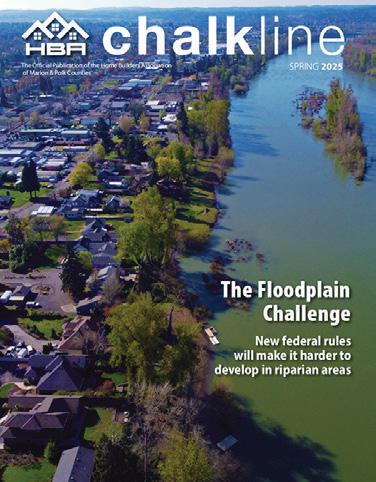
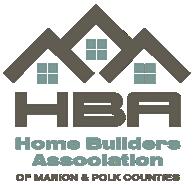

Members of the Home Builders Association now have another reason to take full advantage of their membership: new vehicle savings programs at Ford Motor Company, Ram and MercedesBenz through the National Association of Home Builders.
Why does this matter for your business? For many in our industry, reliable vehicles are essential. They’re your mobile office, your materials hauler, your job site lifeline. And with today’s vehicle prices, even a modest discount can make a big difference—especially when you’re buying multiple units or working to control operating costs. It’s a practical way to reinvest in your company without overextending your budget. If you’re in the market for a new truck or van, don’t leave money on the table. Check out these program details and instructions and make sure you’re getting the most from your membership.
The new Ford Pro Member Savings program provides a substantial discount on the purchase or lease of many Ford vehicles, including the popular F-Series trucks, Transit vans, and
other work-ready models that are staples for many contractors and building professionals. Whether you’re replacing a single vehicle or upgrading your fleet, this program has real dollarsand-cents value.
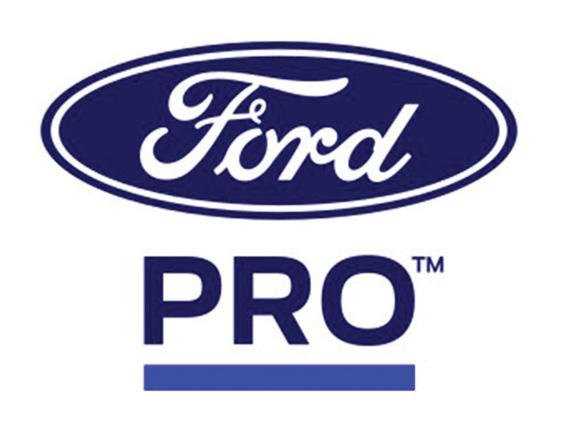
Here’s how it works: HBA members receive up to $5,000 off select Ford vehicles. The offer applies to both personal and commercial purchases. These savings are stackable with other local offers, making it one of the best ways to lower your cost on new transportation for your business or crew.
The process is simple. Members log in to their NAHB account and generate a certificate through the Ford Pro Member Savings portal at www.nahb.org/ford, which can be taken directly to your local Ford dealership. This ensures your discount is recognized and applied at the time of purchase or lease.
Continued on page 18



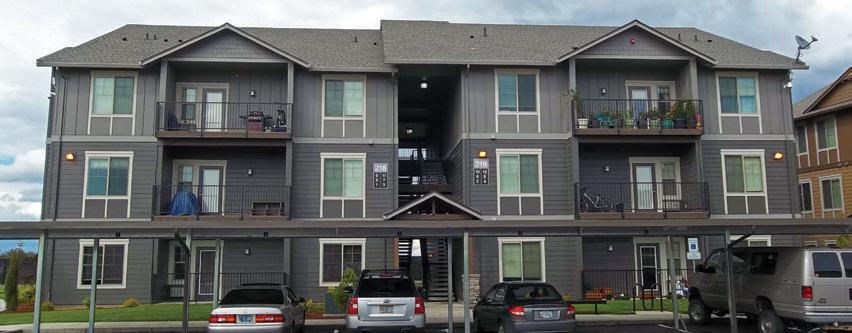
The hexagonal grid used in honeycomb is the most efficient way to cover an area with minimal circumference or boundary.
Charles Darwin described it as a masterpiece of engineering, “absolutely perfect in economizing labor and wax.” The use of this shape reflects Hagan Hamilton’s ongoing commitment to proficiency and resourcefulness.
Much like a beehive, Hagan Hamilton is a humming, thriving community in which everyone plays a distinct role but is united in shared purpose. We are industrious, but also operate as a family — working toward something greater than ourselves.






HBA members and their employees are also eligible for a $1,000 cash allowance to be applied towards the Commercial purchase or lease on many RAM trucks and vans. To take advantage of this offer, fill out the RAM Code Request form available at www.nahb.org/RAM. Once you receive your code, simply print all documents and bring to your local RAM dealer, being sure to give the dealership your documents and code before purchasing or leasing your vehicle.




This is just one of several member-exclusive savings programs available through NAHB. But for contractors and building professionals who rely on their vehicles every day, this one might just move to the top of the list.
Mercedes-Benz USA, LLC. is excited to extend NAHB members an exclusive incentive towards the purchase or lease of your next Mercedes-Benz commercial vehicle. This incentive is available on new, unused Cargo Vans, Crew Vans, Passenger Vans and Cab Chassis.

NAHB members can save an additional $500 on top of published Cash, APR and Lease offers on your next purchase or lease of any Mercedes-Benz commercial vehicle model. You can explore the Mercedes-Benz Vans lineup at MBVans.com.
To take advantage of the offer, visit your local Mercedes-Benz Vans dealer, mention your NAHB membership, and bring a printed copy of your Proof of Membership. To receive an email with your Proof of Membership, please complete the form at https://www.nahb.org/forms/gated/mercedes-benz-proofof-membership. (You must obtain a copy of your Proof of Membership prior to visiting the dealership).
For complete program requirements including rules, vehicles, equipment, and warranty please consult your local dealer.


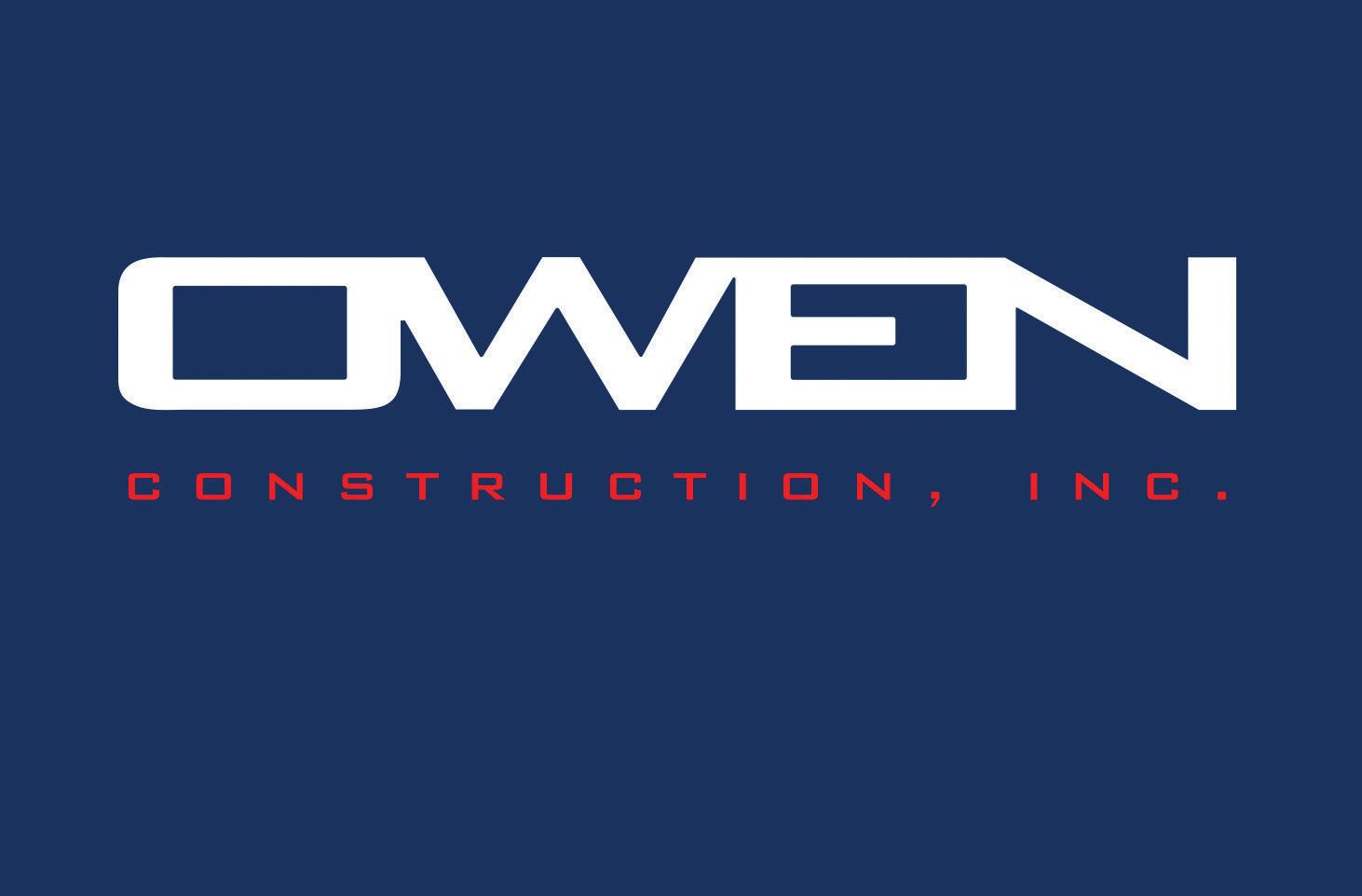

As climate change continues to drive increasingly severe heat waves across the Pacific Northwest, Oregon has taken decisive action to protect outdoor and indoor workers from heat-related illnesses. Oregon Occupational Safety and Health Administration (OSHA) implemented its permanent heat illness prevention rule in June 2022, a pioneering regulation designed to safeguard employees in industries where high temperatures pose serious health risks.
The rule applies to both outdoor and indoor workplaces where heat is a factor and becomes enforceable when the heat index reaches or exceeds 80°F. At this threshold, employers are required to implement basic preventative measures. These include providing access to sufficient drinking water, ensuring adequate shade, and allowing rest breaks. The regulation intensifies when the heat index hits 90°F, requiring more robust safeguards to protect worker health and safety.
Oregon OSHA’s heat rule outlines a tiered response based on the heat index levels, which combine temperature and humidity to assess the potential risk of heat-related illness. The main components include:
• Water Access: Employers must provide at least 32 ounces of cool drinking water per hour per employee. This water must be readily accessible and refilled as needed.
• Shade and Rest Breaks: When the heat index exceeds 80°F, workers must have access to shaded areas for cool-down breaks. At 90°F or above, employers are required to implement mandatory rest breaks. The frequency and duration of these breaks depend on the severity of the heat and the nature of the work.
Roy Shawgo HBA Director of Safety and Loss Control
• Acclimatization: Workers new to hot environments or returning after a break must be gradually acclimatized to the conditions. This aims to reduce the risk of sudden heat illness, as workers build tolerance over time.
• Training: Employers must provide annual training to workers and supervisors on recognizing heat illness symptoms, first aid, emergency response, and preventative practices. Training must be in a language and vocabulary workers can understand.
• Emergency Planning: The rule mandates employers to establish and communicate clear emergency procedures, including how to recognize and respond to symptoms of heat exhaustion or heat stroke.
This rule affects a broad spectrum of industries, including agriculture, construction, landscaping, and warehousing. While some employers were already implementing heat illness prevention programs, Oregon OSHA’s regulation ensures consistency and accountability across the state.
Workers benefit significantly from these protections. Heat exhaustion and heat stroke are preventable but can be fatal if not addressed promptly. Oregon’s rule empowers employees to take breaks and access water without fear of retaliation, fostering a culture of safety and health.
Employers have voiced concerns about potential operational slowdowns due to mandatory breaks and compliance costs. However, Oregon OSHA argues that preventing heat illness reduces absenteeism, improves productivity, and lowers long-term costs related to workers’ compensation claims and medical treatment.

Oregon is among the first states to implement a permanent and comprehensive heat illness prevention rule. It joins California and Washington as leaders in occupational heat safety regulations. As extreme heat events become more frequent due to climate change, the importance of such measures will only grow.
Federal OSHA is currently in the process of developing a nationwide heat illness prevention rule, and Oregon’s efforts may serve as a model for other states. By proactively addressing this climate-related workplace hazard, Oregon is setting a strong example in prioritizing worker health and safety in an era of environmental uncertainty.
Contact Roy Shawgo at roy@homebuildersassociation. org or at 503-898-0051 if you have questions or concerns.
